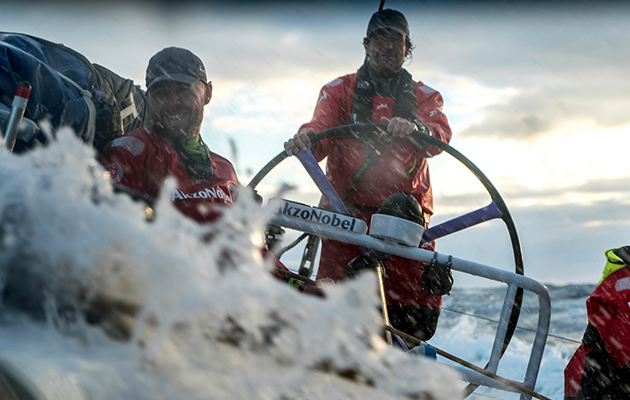Nine months and 45,000 miles of gruelling racing: the Volvo Ocean Race has never been tougher. Here's how to follow the 2017-18 race
The Volvo Ocean Race 2017-18 route will take the sailors over 45,000 nautical miles around the world and will feature three times as much sailing in the Southern Ocean as in recent editions.
As well as Alicante and Lisbon, the race will also take in Cape Town, Melbourne, Australia (the first time in more than a decade the race has stopped there), Hong Kong, Guangzhou in China, Auckland, Itajaí in Brazil, Newport in Rhode Island, Cardiff and Gothenburg before the grand finale in The Hague.
The fourth edition to start from Alicante kicks off with an in-port race in the Spanish city on 14 October, and the first offshore leg – a short hop to Lisbon – beginning on 22 October.
Continues below…
Who will win the Volvo Ocean Race? Read Ian Walker’s form guide
Reigning Volvo Ocean Race race winner Ian Walker, who skippered Abu Dhabi Ocean Racing to win the 2014-15 race, analyses…
VIDEO: How a massive makeover turned the Volvo Ocean Race one-designs into mint condition
Small fishing boats lie alongside; seagulls pick their way past fishing pots and nets. The River Tagus winds by. Nothing…
Coverage of the race has changed – instead of each team having their own dedicated Onboard Reporter (known as ‘OBRs’) – a non-sailing member of the team whose duties were limited to media output including video, photos and email updates – the Volvo Ocean Race organisation now has its own squad of OBRs which they will place onboard different boats.
These reporters will not be affiliated to a particular team – and hopefully will be freer to share the warts-and-all truth of sailing 45,000 miles in close confines.
The media team includes former OBRs Brian Carlin (Ireland) and Sam Greenfield (United States). They are joined by a varied team including National Geographic photographer Jen Edney (United States); Konrad Frost, who reported onboard from the Clipper Round the World Race; BBC journalist Tom Martienssen (Britain), who served as a gunner in the British Royal Air Force; and natural history documentary maker James Blake (New Zealand/Britain), who is also the son of legendary Volvo Ocean Race winner Sir Peter Blake.
Other changes include a new ‘crew communicator’ platform which will allow sailors to post to social media directly from on board, without having to go via the race channels (but without being able to access any outside assistance).
Get your geek on
There is a new expert commentary panel, made up of dedicated ‘Race Experts’, including famous photographer Rick Tomlinson, who shot the race while competing in four editions.
The panel also includes three-times Volvo crewmember Peter Tans, meteorologist Gonzalo Infante, who has forecast and sailed for America’s Cup and IMOCA teams, Vendee Globe sailor Conrad Colman and Figaro racers Will Harris and Sam Matson. A new dedicated Twitter channel @RaceExperts is the place to go for their analysis and commentary.
Behind the scenes
The Yachting World team will be getting behind the scenes at the pre-start, tracking down the inside stories at the stopovers, and telling the tales from on board with exclusive news and video content. Visit www.yachtingworld.com/volvooceanrace
YouTube
The Yachting World YouTube channel has a dedicated Volvo Ocean Race playlist with our own exclusive content and best videos from the teams Yachting World You Tube
There is also a Volvo Ocean Race channel here

Race tracker
The Volvo Ocean Race has a new dashboard with real-time weather and tracker data.
Volvo Ocean Race Website
Follow all the action on the Volvo Ocean Race website.
Social media
Yachting World will be sharing exclusive content via our Facebook page @yachtingworldmagazine and Twitter @yachtingworld
The Volvo Ocean Race Facebook page is @VolvoOceanRace, and on Twitter @VolvoOceanRace with analysis at @RaceExperts But with the new freer social media platform it’s well worth following favourite sailors individually too.






